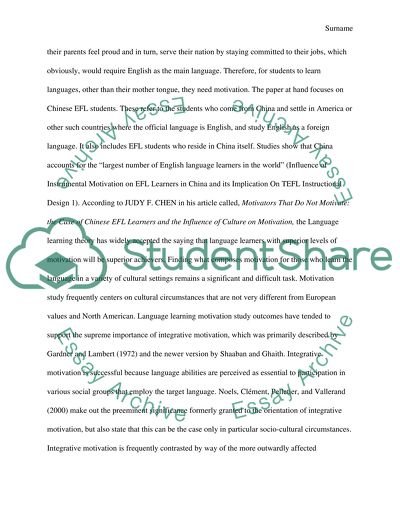Cite this document
(“The motivations of Chinese EFLs Term Paper Example | Topics and Well Written Essays - 3750 words”, n.d.)
Retrieved from https://studentshare.org/education/1398415-the-motivations-of-chinese-efls
Retrieved from https://studentshare.org/education/1398415-the-motivations-of-chinese-efls
(The Motivations of Chinese EFLs Term Paper Example | Topics and Well Written Essays - 3750 Words)
https://studentshare.org/education/1398415-the-motivations-of-chinese-efls.
https://studentshare.org/education/1398415-the-motivations-of-chinese-efls.
“The Motivations of Chinese EFLs Term Paper Example | Topics and Well Written Essays - 3750 Words”, n.d. https://studentshare.org/education/1398415-the-motivations-of-chinese-efls.


